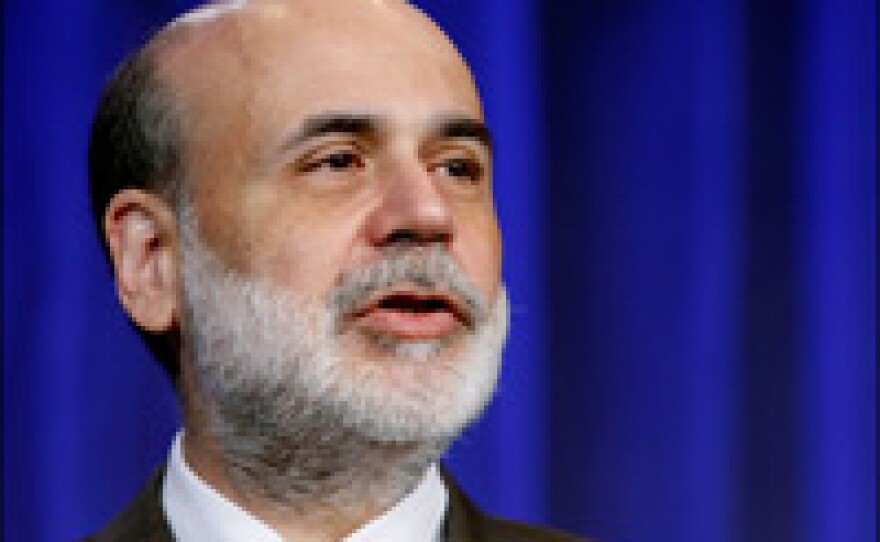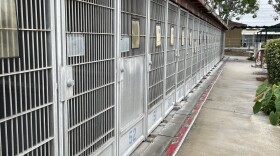
Over the past week, the U.S. financial landscape has been reshaped by unprecedented intervention by the federal government. It has stepped in to rescue both individual companies and the financial system at large.
Here, a look at how the government will determine what to rescue and what to treat as financial road kill in the coming weeks.
How has the government decided which companies to rescue?
"Everybody yearns for more clarity and to understand the rule that they're following," says Laurence Meyer, an economist for the Center for Strategic and International Studies in Washington, D.C., and a former member of the Board of Governors of the Federal Reserve. The decisions so far indicate that "everything is done on an individual basis --whether to rescue or not rescue."
Treasury Secretary Henry Paulson says the government has been handling things on a "case-by-case basis," allowing some companies to fail while taking an ownership stake in others that it felt were too big to fail. It made an $85 billion loan to American International Group this week and took nearly an 80 percent ownership stake in the company, but it let Lehman Brothers falter. And it took over Fannie Mae and Freddie Mac just a few weeks ago.
Officials have warned that more financial institutions are teetering on the brink of collapse as a result of investments they made in mortgage-related assets.
Anyone is looking for a rule of thumb, a formula or a doctrine is not getting it. But that may change if the agency to buy troubled loans passes muster with Congress.
Who are the key decision-makers that have determined which companies should receive federal assistance?
The Federal Reserve and the Treasury Department have the legal authority and the financial resources to make rescues possible. The Treasury can borrow using the credit of the United States and then deposit funds into the Federal Reserve, which has the authority under certain circumstances to make loans and advances.
Federal Reserve Chairman Ben Bernanke, Paulson and Timothy Geithner, president of the Federal Reserve Bank of New York, are the people orchestrating the talks over which companies to rescue.
Has there been any thread connecting the rescues so far?
Peter Wallison, Arthur F. Burns fellow in financial policy studies for the American Enterprise Institute, says if companies "have not been well-managed and if they have put themselves too much at risk, the government has no responsibility for them unless their failure will create some kind of systemic risk."
In the case of Bear Stearns, the fear was that its collapse in March would cause systemic risk, says Wallison, who served as general counsel of the Treasury Department during the Reagan administration. Now, six months later, the litmus test of whether it's worth committing taxpayer dollars to bail out a poorly managed company seems to be whether there will be a domino effect.
Fannie Mae and Freddie Mac were government-chartered companies, and investors already expected that there was an implicit government guarantee behind their securities. The bailout for the two companies was necessary, says Wallison, because the companies had more than $5 trillion in outstanding debt obligations that were held by thousands of banks.
Lehman Brothers' problems were more widely known, and they occurred in the aftermath of the Bear Stearns bailout, when the Federal Reserve had established the primary Dealer Credit Facility, a financial lifeline for investment banks. But Lehman didn't access the line of credit and its business counterparts had six months to adjust their exposure to Lehman. In the end the government let Lehman fail because the Treasury and the Fed decided it didn't pose a systemic risk.
The bailout of AIG "clearly represents the United States government taking an ownership interest in a private firm," says Jonathan G.S. Koppell, an associate professor of politics and management at the Yale School of Management. In an op-ed in The New York Times, Koppell said that the Federal Reserve and the Treasury Department were acting like "insurance claims adjusters" with their selective decisions over which companies to rescue.
AIG's troubles came as somewhat of a "surprise," says Wallison. Their problem wasn't solvency but that the company wanted to raise billions of dollars quickly and couldn't find those funds in the marketplace. As a result, the Federal Reserve extended a "hugely expensive loan" to it, he says. The government also received almost 80 percent of the stock of the company. These two factors amount to "an enormous penalty" the company had to pay to avoid bankruptcy, Wallison says, adding that this is likely to discourage others from going to the Fed for assistance unless it is a last resort.
Why has the government proposed creating a program to buy troubled loans?
The government plans to work with Congress over the next week to pass legislation to create what Paulson calls a "troubled asset relief program."
This program would purchase mortgage-related assets banks and financial institutions own that are "parked or frozen" on their balance sheets, he says. Because these securities can't be valued now, it's creating uncertainty in the marketplace over the assets and the companies that own them.
"These illiquid assets are clogging up our financial system and undermining the strength of our otherwise sound financial institutions," he says. Paulson says that this has wider repercussions that threaten personal savings and the ability for businesses and consumers to borrow funds, as well as investments that help to create jobs.
What shape could this program take?
The program would need to be "sufficiently large" to make a difference, and that means it will very likely cost "hundreds of billions" of taxpayer dollars, Paulson says. The program will include features that will protect taxpayers "to the maximum extent possible," he says, adding that this solution will cost American families much less than the alternative: "A continuing series of financial institution failures and frozen credit markets unable to fund economic expansion."
The Treasury Department said it would take two immediate steps while it discusses the creation of this program with Congress. Fannie Mae and Freddie Mac will increase their purchasing of mortgage-backed securities to bolster the mortgage market. And the Treasury will expand its own purchase of such securities.
President Bush acknowledged that the government's proposals — including action by the Treasury Department, the Federal Reserve and the Securities and Exchange Commission — "does entail risk, but we expect that this money will eventually be paid back."
Christopher Dodd (D-CT), chairman of the Senate Banking Committee, says Congress is "anxious to hear the specifics" of the plan that Treasury is preparing in concert with the Fed.
What steps does the government plan to take to protect mutual funds?
Investor confidence in money market funds was shaken this week when one fund said that its value fell below the industry benchmark of $1 per share. It was the first time that individual investors in a money fund were at risk of losing some of their principal.
Paulson says that concerns about the net asset value of such funds falling below $1 "exacerbated global financial market turmoil" and that it has also caused short-term interest and funding rates to rise.
To remedy the situation, the Treasury Department said it would tap up to $50 billion to create a "temporary guaranty program" that will offer insurance for both retail and institutional money market funds. Those funds will pay a fee to participate in the program that will span over the next year. Investors will be notified if their fund has to seek assistance from the program.
Why has the Securities and Exchange Commission banned short selling?
On Friday, the SEC temporarily banned any short selling of nearly 800 financial stocks. That's when investors make a bet that the price of a stock will fall. But investors that engage in selling short don't actually own the stock. Instead, they borrow the shares as a loan from a broker. Investors then sell the shares and if the stock price drops, as they hope it does, they purchase them at the lower price to repay the broker. The SEC action was meant to "protect the integrity and quality of the securities market" and bolster investor confidence, the agency said.
Copyright 2022 NPR. To see more, visit https://www.npr.org. 9(MDAzMjM2NDYzMDEyMzc1Njk5NjAxNzY3OQ001))






